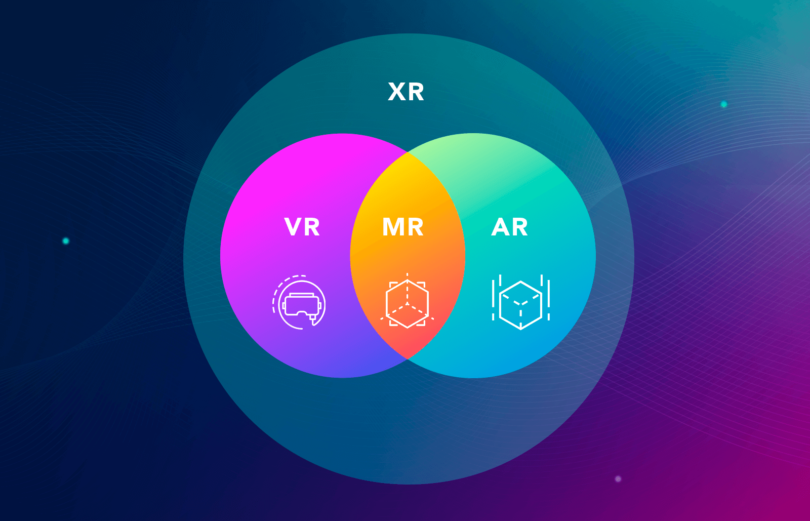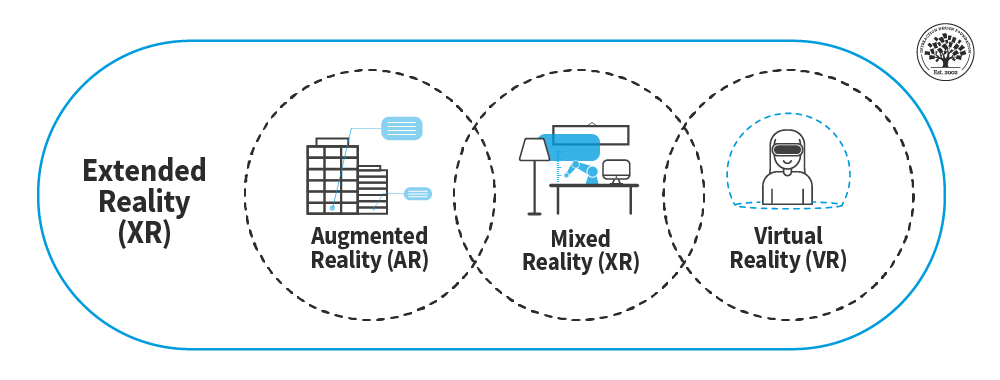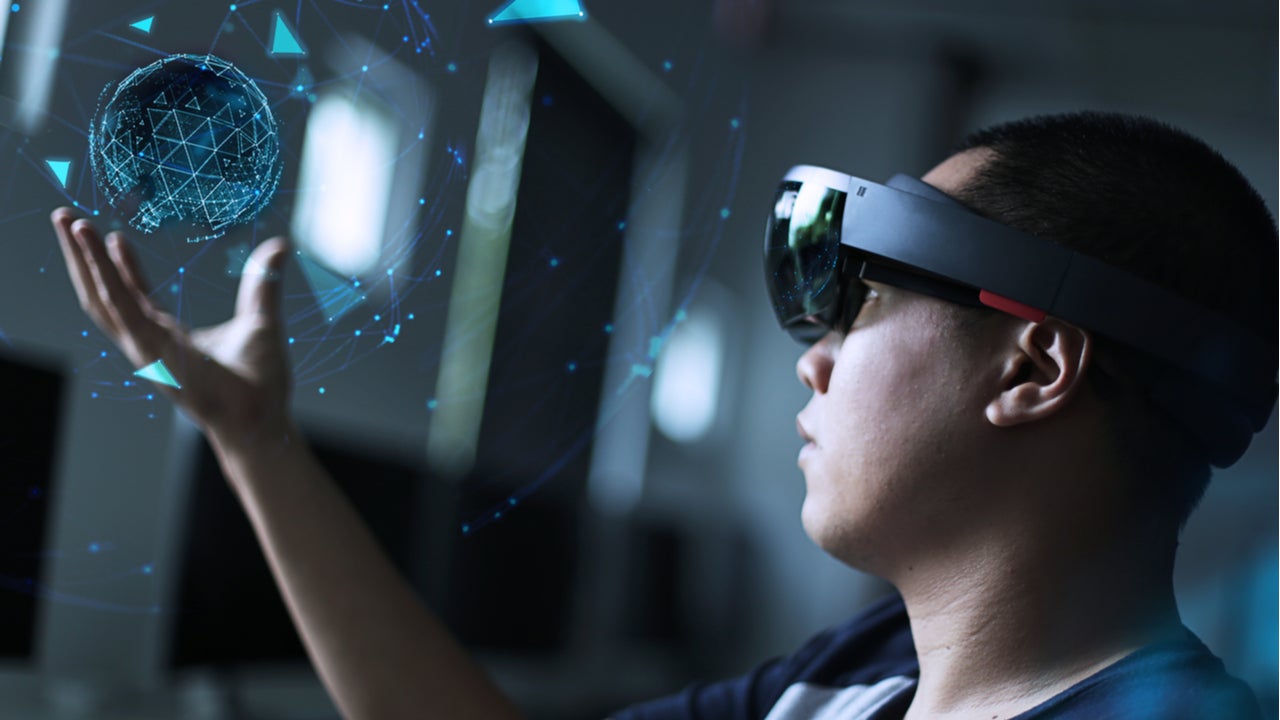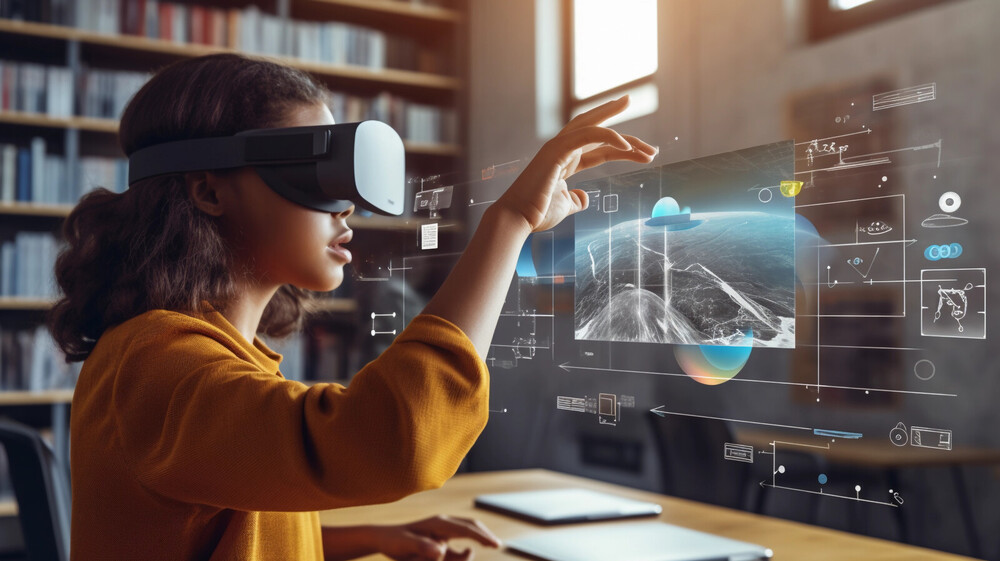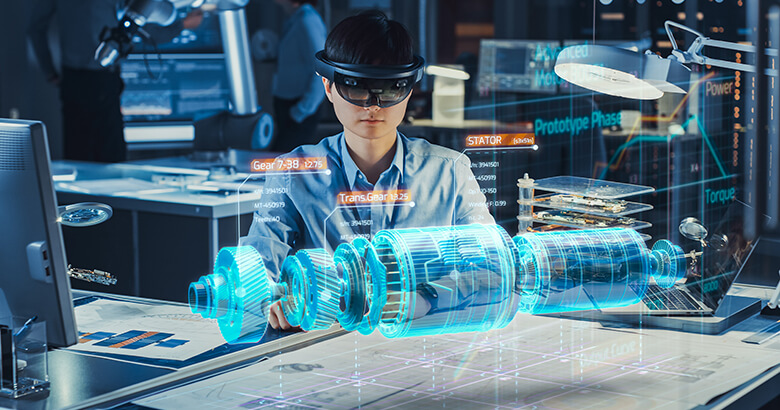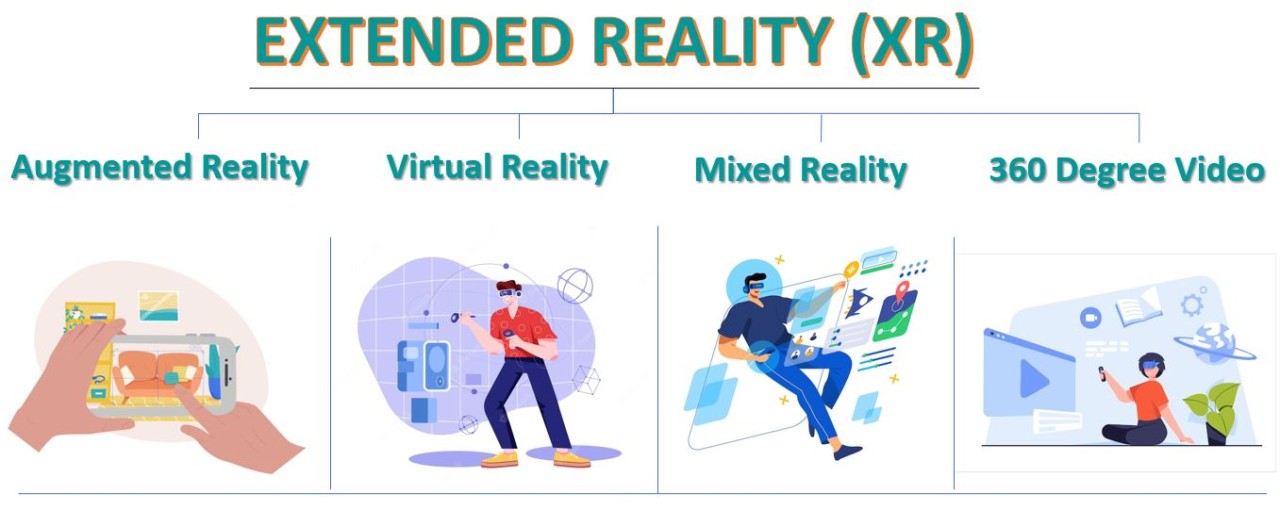Our daily lives are changing, and morphing into something more advanced as soon as there is a technological advancement. AR VR MR and XR technology is the new strain of the evolution of technology. The aftermath of COVID-19 has left people attached to their screens since they are more comfortable behind the screen. Whether learning or gaming, the screen has become a primary requirement for work. This evolution of technology has given rise to Meta Quest 2. Meta Quest 2 seamlessly unleashes you to an interactive environment in your home, whether for work, shopping, exploring, or more.
What do you mean by AR VR MR and XR technology?
There is a definition for each of these terms. Below is defined the terms:
- AR: AR or Augmented Reality is the technology that integrates digital content with the real world via a phone or a head-worn device, such as a headset as introduced by the Meta Quest series.
- VR: VR or Virtual Reality immerses the user using a virtual environment to create surreal experiences, whether they involve the user in a real-life situation or a creative imaginary experience.
- MR: MR or Mixed Reality gives you the best of both worlds. It uses AR and VR to capture the real world through cameras and sensors and then projects it as a virtual environment. In MR, the virtual reality surrounds you and is integrated into your reality for better experiences.
- XR: XR refers to everything above. The metaverse refers to the ecosystem surrounding the XR. Imagine a 3D internet that one can access from anywhere at any time, be it via a laptop or a phone.
AR – Augmented Reality
AR pushes real-time, non-disruptive information to your eyes. It can deliver information so that you won’t need to look at your phone. It comes in handy when a glance away might be dangerous or impractical. The applications for AR are unlimited. For example, AR might help you while choosing the right sofa for your house. You can check if the sofa matches the aesthetic of your house or you can even check if it is in the perfect place in the living room.
- Real-time, Non-Disruptive Information: AR delivers information directly to your eyes, allowing you to stay informed without needing to look at your phone. This is especially useful when a glance away might be dangerous or impractical.
- Enhanced Home Design: AR can assist in choosing the right furniture by allowing you to visualize how a sofa fits with your home’s aesthetic and placement in the living room.
- Educational Benefits: In the education sector, AR can make learning more engaging and memorable by providing virtual visualizations of facts and concepts.
- Athletic Applications: AR real-time data and GPS can aid athletes in sports like cycling and skiing by keeping their attention on the road and path, improving safety and decision-making.
- Remote Assistance for Technicians: AR can offer remote guidance for repair processes, utilizing precise localization data to direct technicians to exact incident locations, thereby accelerating repair times and enhancing the quality of service.
VR – Virtual Reality
To be completely distraction-free in 2024, we have technologies like VR or Virtual Reality to help us through. AR VR MR and XR technology work together to give us the best of the digital world. However, VR integrates reality and creative imagination to immerse you completely in whatever you do. Technology Overview: In 2024, technologies like AR, VR, MR, and XR work together to provide a comprehensive digital experience, with VR focusing on complete immersion.
- Virtual Reality (VR): VR immerses users entirely in a computer-generated virtual environment, replacing their view with a virtual one. It has been evolving steadily over time.
- Immersive Entertainment Requirements: To deliver a fully immersive VR experience, technologies like HD rendering pipelines, volumetric capture, 6DoF (six degrees of freedom) motion tracking, and facial expression capture are essential.
- Training and Education: VR is utilized in training and educational contexts, such as in healthcare for rehabilitation processes.
- High-Quality Experience: For seamless VR experiences, emphasis is placed on high-quality video rendering and ultra-low latency.
- Enhanced Video Conferencing: VR devices improve video conferencing experiences through platforms like RecRoom, which facilitate virtual meet-ups.
- Standalone vs. Tethered Devices: While some VR devices require a PC connection, standalone VR devices are capable of delivering AAA gaming and metaverse experiences.
- Future of VR: Virtual Reality is anticipated to be a gateway to the metaverse in the future.
MR – Mixed Reality
Mixed Reality (MR) sits somewhere between Augmented Reality (AR) and Virtual Reality (VR). There are three key factors in this type of XR. The first is via a smartphone or AR wearable device with virtual objects and characteristics superimposed into real-world environments, or vice versa.
One such example is the Pokemon Go mobile game. The game took everyone by storm in 2016. It uses Virtual Reality and Augmented Reality by integrating Pokemon into real-world environments with a smartphone camera. It blends real-life environments with computer-generated objects.
Mixed reality has also started to be used to enable VR real-world players to be superimposed into video games to bring real-world personalities to game streaming platforms like YouTube or Stream.
XR – Extended Reality
eXtended Reality (XR) is an umbrella term for technologies that help in enhancing or replacing our view of the world. This occurs either via overlaying or immersing computer texts and graphics into our real-world and virtual environments or a combination of both. XR encompasses AR, VR, and MR. All three “realities” have different features that they focus upon. However, each has a different purpose and underlying technologies.
eXtended Reality is set to play a fundamental role in the metaverse. The ‘next evolution of the Internet’ will converge real, digital, and virtual worlds into new realities. This will be accessed via an Arm-powered gateway device such as a VR headset or a pair of AR smart glasses.
eXtended Realities share some similarities: A core part of all XR wearable devices is the ability to use visual input methods such as object, gesture, and gaze tracking to navigate the world and display context-sensitive information. Depth and location features are used to enable depth perception and mapping. However, XR varies depending on the type of VR, AR, or MR experience and the complexity that they can enable in the case.
Difference between AR, VR and XR
When we talk about AR VR MR and XR technology, we often get confused and can’t discern one from another. So here is a table to differentiate AR vs. VR vs. XR
| Feature | Augmented Reality (AR) | Virtual Reality (VR) | Extended Reality (XR) |
| Definition | It overlays digital content onto the real world | It immerses users in a completely virtual environment | It is an umbrella term for AR, VR, and MR technologies |
| Device Types | Smartphones, tablets, AR glasses | VR headsets (e.g., Oculus Rift, HTC Vive), VR gloves | AR glasses, VR headsets, mixed reality devices |
| User Interaction | It provides interaction with both real and virtual objects | It provides interaction within a fully virtual space | It provides interaction that can range from AR to fully immersive VR |
| Environment | The real-world environment is enhanced with digital elements | Provides a fully synthetic, computer-generated environment | It is a combination of real and virtual worlds |
| Use Cases | Navigation, gaming, education, maintenance, marketing | Gaming, simulations, training, education | Wide range of applications combining AR and VR |
| Experience Level | Adds to the real-world experience | Replaces the real-world experience | Varies from slight augmentation to full immersion |
| Technical Complexity | Moderate | High | Very high |
| Cost | Generally lower cost | Higher cost due to advanced hardware | Varies depending on the specific application and hardware |
| Field of View | Real-world view with digital overlays | Entirely virtual field of view | Can vary from a real-world view with overlays to a full VR |
Conclusion
As technology keeps progressing, we get various kinds of technological advantages that make our lives easier. AR VR MR and XR technology is no different than any other technological advancements. AR VR MR and XR technologies help the people behind the screen be more objective and elicit time-conserving, practical solutions for problems.
It is more of a vision come true. It gives a spin to creative ideas and when it comes to cultivating them, these technologies help one to find the true solution. AR VR MR and XR technology is a blessing upon humanity in the field of technology up till date. Unlike AI, AR VR MR and XR technology brings forth creativity without repetition and gives life to creations.
FAQs
Ques) What is AR VR MR and XR technology?
Ans) Extended Reality (XR) is an umbrella term referring to all real and virtual combined environments and interactions generated by computer technology. It includes AR (augmented reality), VR (virtual reality), and MR (mixed reality). AR VR MR and XR technology are future of the technological advancements.
Ques) What is an example of XR?
Ans) Some devices providing XR are AR glasses, VR headsets, and mixed reality devices.
Ques) What is AR and what are its examples?
Ans) Augmented Reality (AR) is mostly used in shopping apps and is integrated into them. They mainly help shoppers to decide if something actually looks good on them or not and then they can proceed to buy something if they think that it suits them. For example, in a shopping app, we are introduced to a ‘try it on’ feature where we can see if something suits us digitally or not.
Ques) What are the four types of AR?
Ans) Four types of AR based on their functionality are:
Marker-based AR
Markerless AR
Location-based AR
Projection-based AR
Ques) What is an example of MR?
Ans) Examples of mixed reality or MR are when they are used on social media applications like Instagram or Snapchat, virtual makeup applications, and virtual furniture settings.”

